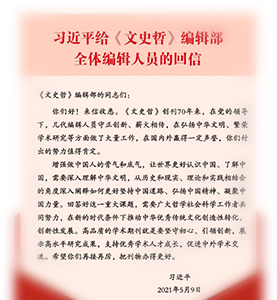论牛女传说在古代诗歌中的反映 赵逵夫
“牵牛织女”传说西周末年在周秦之地流传。过去学者们只看到《诗经·小雅·大东》一诗中说到牵牛、织女、天汉,因该诗是借此以讽刺周王室对东部诸侯国的剥削,故认为先秦时代“牛女传说”尚未形成。其实分别形成于秦早期活动区域和汉水流域周人活动地区的《秦风·蒹葭》、《周南·江汉》两诗所表现的情节、意境,同后代的牛女传说是一致的,只是没有点出“牵牛”、“织女”而已。西汉末年所成《易林》中《夹河为婚》、《天女推床》二首,和传为枚乘之作的《兰若生春阳》,也是写牛女传说的。南北朝以后有以牵牛织女口吻所作的诗数首;而更多的诗作反映的情节、人物要素,对认识牛女传说在古代民间的流传状况、文人们对它的关注及上层统治阶级对它的态度有很大意义。
A Study of Representations of the Legend of the Cowherd and the Weaving Maid in Ancient Poetry
Zhao Kuifu
The legend of the Cowherd and the Weaving Maid was spread over the states of Zhou and Qin in the late Western Zhou Dynasty. Scholars used to see only that the Cowherd, the Weaving Maid, and the Milky Way were mentioned in “Large Eastern Vassal States” in the “Book of Odes” of the Book of Poetry. Because this piece is a satire on the Zhou Court’s exploitation of the eastern vassal states, it is widely believed that the legend of the Cowherd and the Weaving Maid had not yet formed in the preQin times. In fact, the plot and meaning manifested in the two poems of “Where Is She?” in “Songs Collect in Qi” and “A Woodcutter’s Love” in “Songs Collected South of the Capital” formed separately in Qin people’s early areas of activity and Zhou people’s area of activity along the Han River, were consistent with the legend in later ages, only that there did not point out the exact names. There were also several poems wrote about the legend in late Han Dynasty and after the Southern and Northern Dynasties. And more poems reflected the plots and characters, which are quite significant for understanding the circulating status in folk society, literati’s attention, as well as the ruling class’ attitude of the legend.


